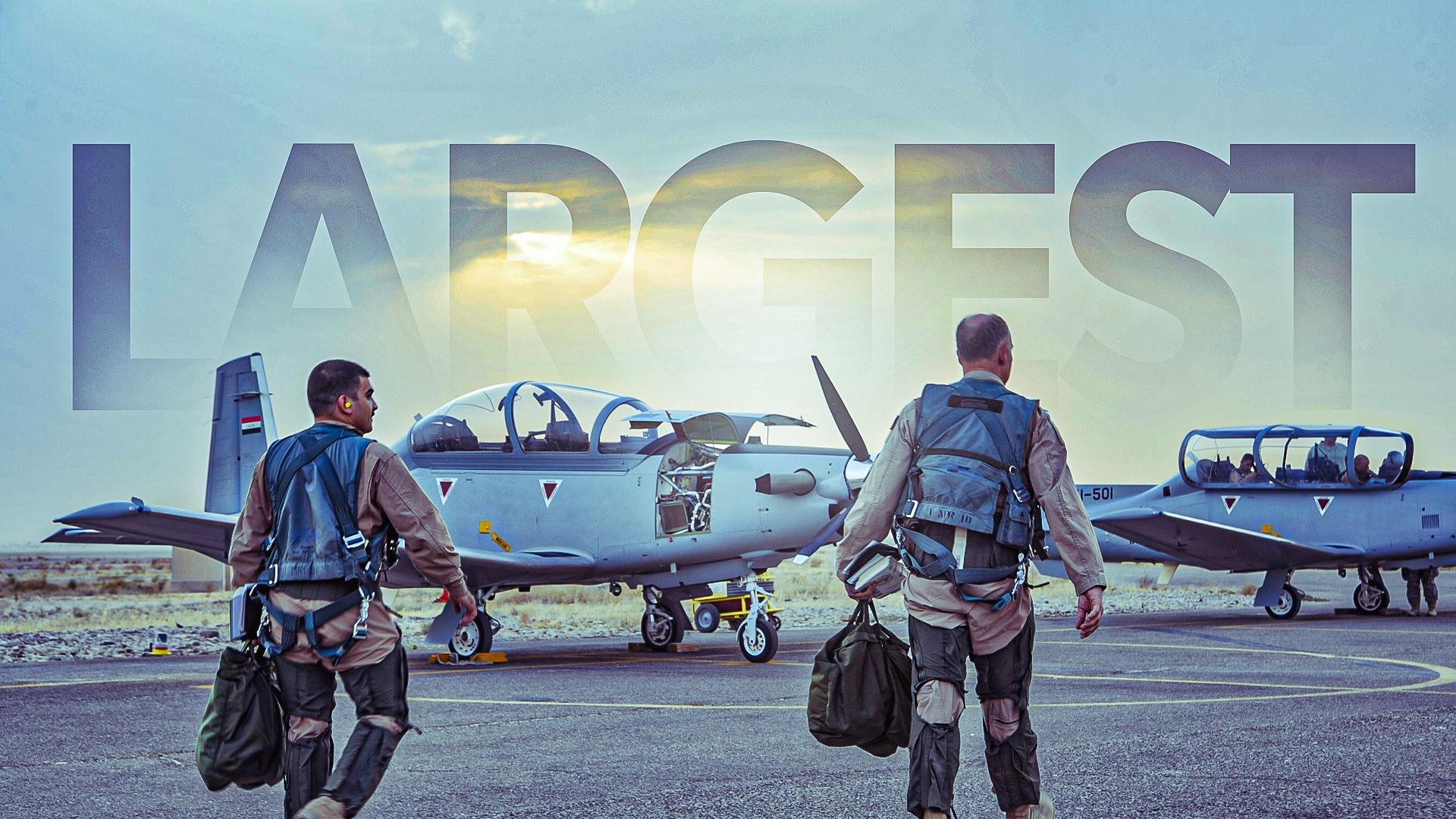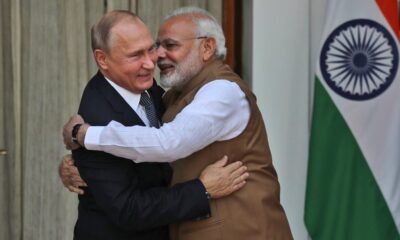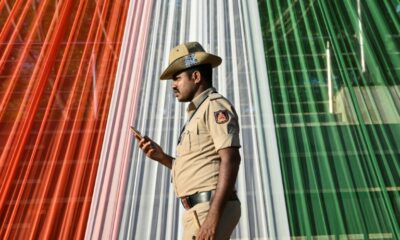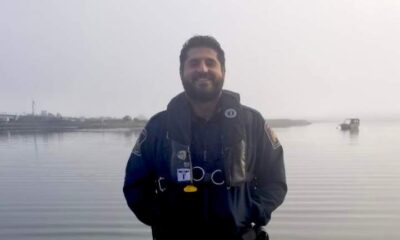World
Global Air Forces Face Recruitment Challenges Amid Expansion Efforts

American air dominance continues to lead globally, with the United States Air Force (USAF) maintaining the largest fleet of pilots despite ongoing recruitment challenges. The landscape of military aviation is shifting as nations grapple with declining birth rates, evolving economic conditions, and the rise of pilot-optional aircraft. This dynamic environment has resulted in fluctuations within air force manpower across the globe, with some nations expanding their pilot corps while others face significant shortages.
The latest data reveals the top five air forces ranked by the number of pilots:
1. USA: 14,486 aircraft, 37,000 pilots
2. Russia: 4,211 aircraft, 4,000-5,000 pilots
3. China: 3,304 aircraft, approximately 4,000 pilots
4. India: 2,296 aircraft, 3,834 pilots
5. Japan: 1,459 aircraft, approximately 2,000 pilots
While these figures indicate a higher number of pilots than aircraft in several air forces, the situation varies significantly among nations.
Japan’s Air Power Dynamics
Japan’s air strength is underpinned by the dedication of around 2,000 pilots in the Japan Air Self-Defense Force (JASDF), a small segment of its nearly 50,000 uniformed and civilian personnel. Each of the JASDF’s 1,459 aircraft, which include trainers, tankers, and advanced stealth fighters, relies on the skill of these aviators.
Training typically begins at Hamamatsu with basic instruction before progressing to advanced maneuvering in the Kawasaki T-4. Pilots then join operational conversion units, where they prepare to fly advanced aircraft such as the Boeing-licensed Mitsubishi F-15J Eagle and the Lockheed Martin-derived F-2 Viper. As Japan integrates the F-35A into its fleet, pilots must adapt to the complexities of fifth-generation fighter operations.
Japan’s Maritime Self-Defense Force (JMSDF) also plays a critical role, particularly with the helicopter carrier Izumo, which is poised to launch F-35B fighters in the near future. By the time Izumo reaches full operational capacity, Japan will require over 100 qualified F-35B pilots in addition to its existing land-based fighter force.
India’s Evolving Air Force
The Indian Air Force (IAF) faces its own challenges as it strives to fill cockpit positions amid global supply chain disruptions intensified by the ongoing conflict in Ukraine. According to the Hindustan Times, the IAF is authorized for 4,239 pilot positions but currently has only about 3,834 pilots.
With a significant portion of its fleet derived from Russian designs, India must also manage the operational demands of its aircraft carriers, particularly the INS Vikramaditya, which requires approximately 650 pilots for effective operation. Delays in engine overhauls and other maintenance have hindered the availability of jets for carrier qualifications, exacerbating the pressure on the IAF’s pilot corps.
Significantly, Squadron Leader Mohana Singh made history as the first woman fighter pilot to fly India’s Tejas fighter jet in September 2023, marking a crucial advancement in gender equality within the IAF. Future procurement decisions, including potential deals for F-21 variants of the F-16 or Sukhoi Su-57 fighters, hinge on India’s assessment of future conflict scenarios.
The People’s Liberation Army Air Force
The People’s Liberation Army Air Force (PLAAF) is rapidly expanding, with an estimated 4,000 active-duty pilots forming the backbone of its growing capabilities. Cadets begin their training at the Air Force Aviation University in Changchun before advancing to operational units.
Recent developments have highlighted the increasing importance of naval aviation, with the Naval Aviation University in Yantai stepping up training efforts. Notably, the extradition of former US Marine pilot Daniel Duggan from Australia has drawn attention to the complexities of international military training.
Despite facing challenges, the PLAAF’s fighter inventory is robust, with the stealthy J-20 Mighty Dragon leading the charge in modernization efforts. The PLAAF is also focusing on enhancing its recruitment and training programs across various specialties, including transport and special missions.
Russia’s Recruitment Struggles
The Russian Aerospace Forces (VVS) currently operate around 4,211 aircraft with a pilot count estimated between 4,000 and 5,000. The ongoing conflict in Ukraine has compounded recruitment difficulties, with losses among experienced aviators and operational attrition affecting readiness levels.
To mitigate personnel shortages, Russia has shifted its strategy towards increased reliance on drones and long-range munitions, aiming to preserve its manned aircraft for essential operations. Training continues at the Krasnodar Military Aviation School and Syzran Helicopter School, but the VVS faces ongoing challenges in maintaining pilot proficiency amidst high attrition rates.
The United States Air Force’s Ongoing Needs
The USAF remains the most substantial air power globally, with a reported 37,000 pilots. Nevertheless, the service continues to face significant recruitment pressures. Reports indicate that more than 5,200 Air Force combat aircraft are currently awaiting pilots, highlighting the urgency of addressing staffing shortfalls.
Ongoing budget constraints and cuts have led to a decline in pilot experience levels, which can negatively impact mission outcomes in combat situations. The Air Force’s 13,000 pilots, alongside approximately 10,000 naval aviators, are operating under intense pressure, particularly as each supercarrier requires over 200 deck-qualified pilots to sustain its air operations.
As global military aviation continues to evolve with technological advancements and shifting geopolitical landscapes, the recruitment and training of pilots will remain critical to maintaining combat readiness across air forces worldwide.
-

 Politics4 weeks ago
Politics4 weeks agoSecwepemc First Nation Seeks Aboriginal Title Over Kamloops Area
-

 World5 months ago
World5 months agoScientists Unearth Ancient Antarctic Ice to Unlock Climate Secrets
-

 Entertainment5 months ago
Entertainment5 months agoTrump and McCormick to Announce $70 Billion Energy Investments
-

 Science5 months ago
Science5 months agoFour Astronauts Return to Earth After International Space Station Mission
-

 Lifestyle5 months ago
Lifestyle5 months agoTransLink Launches Food Truck Program to Boost Revenue in Vancouver
-

 Technology3 months ago
Technology3 months agoApple Notes Enhances Functionality with Markdown Support in macOS 26
-

 Lifestyle3 months ago
Lifestyle3 months agoManitoba’s Burger Champion Shines Again Amid Dining Innovations
-

 Top Stories2 months ago
Top Stories2 months agoUrgent Update: Fatal Crash on Highway 99 Claims Life of Pitt Meadows Man
-

 Politics4 months ago
Politics4 months agoUkrainian Tennis Star Elina Svitolina Faces Death Threats Online
-

 Sports5 months ago
Sports5 months agoSearch Underway for Missing Hunter Amid Hokkaido Bear Emergency
-

 Politics5 months ago
Politics5 months agoCarney Engages First Nations Leaders at Development Law Summit
-

 Technology5 months ago
Technology5 months agoFrosthaven Launches Early Access on July 31, 2025



















